Helmsley
OS grid reference:- SE 617 838
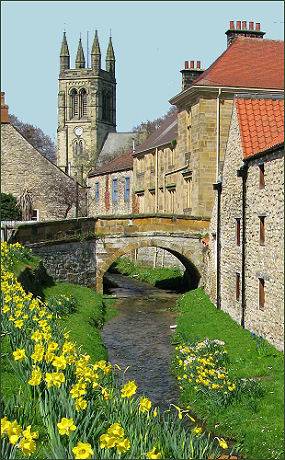 Helmsley is a picturesque market town situated in the North York Moors National Park and is located 13 miles (21 km) to the west of Pickering at the point where Ryedale leaves the moorland and joins the Vale of Pickering.
Helmsley is a picturesque market town situated in the North York Moors National Park and is located 13 miles (21 km) to the west of Pickering at the point where Ryedale leaves the moorland and joins the Vale of Pickering.
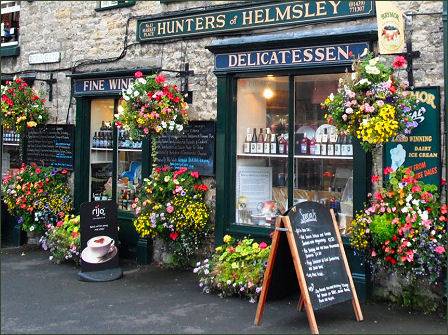 Helmsley is an ancient settlement of much character which pre-dates the Norman conquest of 1066, it is mentioned in the Domesday Survey of 1086, where it is referred to as Almeslai/Elmeslac. The town was referred to as Elmeslac in the medival era, which means means 'Helm's forest clearing'. The settlement grew around its position at a road junction and river crossing point. Helmsley is a compact town, retaining its medieval layout around its market place with more recent development to the north and south of its main thoroughfare.
Helmsley is an ancient settlement of much character which pre-dates the Norman conquest of 1066, it is mentioned in the Domesday Survey of 1086, where it is referred to as Almeslai/Elmeslac. The town was referred to as Elmeslac in the medival era, which means means 'Helm's forest clearing'. The settlement grew around its position at a road junction and river crossing point. Helmsley is a compact town, retaining its medieval layout around its market place with more recent development to the north and south of its main thoroughfare.
The Viking presence in the area is clearly marked in the "gate" ending of the names of many of the town's streets. The word derives from the old Norse "gata", meaning road or path.
Following the Norman Conquest, Helmsley was granted to Robert, Count of Mortain by his maternal half-brother, King William the Conqueror. The land to the west of Helmsley was a royal deer park. The ancient pollarded oak trees in Duncombe Park date from this period, the park is now a national nature reserve.
In around 1100 Helmsley passed to Walter l'Espec, a prominent military and judicial figure of the reign of King Henry I, who founded nearby Rievaulx Abbey, which grew to be one of the richest abbeys in England. His father was probably William Speche, a follower of William I of the Conqueror. In the years up to 1120 he controlled northern England, alongside Eustace Fitz John. He was the builder of Helmsley Castle and built also Wark Castle. In 1191 Walter Espec's successor, Robert de Ros granted Helmsley its Borough Charter, which established it as the market town.
Medieval Helmsley Castle overlooks the town, the castle was first constructed of timber in around 1120 by Walter l'Espec. It was rebuilt in stone in 1186 by Robert de Ros, who built the two main towers, the round corner towers and the main gateway. The castle was first constructed of timber in around 1120 by Walter l'Espec, who was also responsible for the founding of nearby Rievaulx Abbey. Walter left no children and accordingly on his death in 1154 the castle passed to his sister Adelina who was married to Peter de Roos. The castle was rebuilt in stone in 1186 by Robert de Ros, who built the two main towers, the round corner towers and the main gateway. On his death in 1227, the castle was inherited by his son William de Roos who built the chapel in the courtyard.
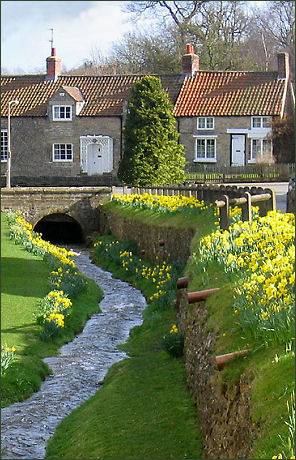 The de Roos family retained Helmsley Castle until 1478, when it was sold by Edmund de Roos to Richard, Duke of Gloucester who was later to became King Richard III. After Richard's untimely death in 1485 at the Battle of Bosworth Field, his successor, King Henry VII restored Helmesley to Edmund de Roos.
The de Roos family retained Helmsley Castle until 1478, when it was sold by Edmund de Roos to Richard, Duke of Gloucester who was later to became King Richard III. After Richard's untimely death in 1485 at the Battle of Bosworth Field, his successor, King Henry VII restored Helmesley to Edmund de Roos.
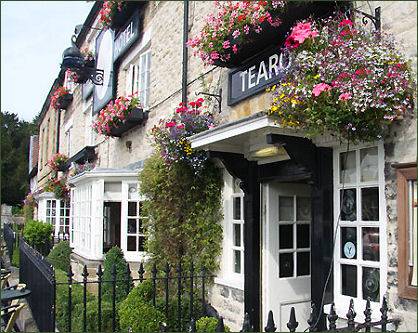 During the Civil War between Crown and Parliament, Helmsley gave its support to the Royalist cause leading to Helmsley Castle being besieged by the Parliamentarian commander Sir Thomas Fairfax in 1644.
During the Civil War between Crown and Parliament, Helmsley gave its support to the Royalist cause leading to Helmsley Castle being besieged by the Parliamentarian commander Sir Thomas Fairfax in 1644.
Sir Jordan Crosland held the castle for King Charles I for three months before surrendering. The massive ditches and eathworks which completely surround the castle rendered it difficult to attack. The castle was finally taken by starving out its desperate inhabitants.
Helmsley Walled Garden stands in the shadow of the historic castle, it consists of 5 acre kitchen garden. Started in 1759, the garden provided the vegetables, fruit and flowers for nearby Duncombe Park until just after the First World War when it was leased as a market garden.
The garden was abandoned during the 1970s but has been lovingly and extensively restored since 1994. There are Victorian glasshouses, designed in 1850 as a vine house and now bursting with colour, fruit trees, vines, a superb double herbacous hot border which runs the entire length of the garden, a laburnum arch, which is stunning when in flower, a peony garden, dipping pond and a clematis garden with over 250 varieties of clematis for the visitor to see. The garden incorporates glass houses designed in 1850 as a vine house. Helmsley Arts Centre offers a range of performances and activities all year round.
The well kept town has a bustling market square, charming tea rooms, bedecked with colorful hanging baskets and floral displays, inviting inns and a good selection of independent shops. A stream flows round the back of the town square, in the centre of the square is a statue of Lord Feversham. The current Earls of Feversham are descended from Sir Charles. who purchased Helmsley Castle after the Civil War.
The Black Swan Hotel is reputed to have played host to the poet William Wordsworth who was visiting his future wife, Mary Hutchinson, in Helmsley. Today the hotel offers home from home country comfort, roaring fires, exceptional cuisine and the lure of a traditional Yorkshire tea room.
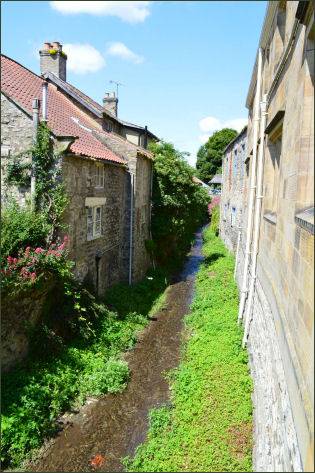
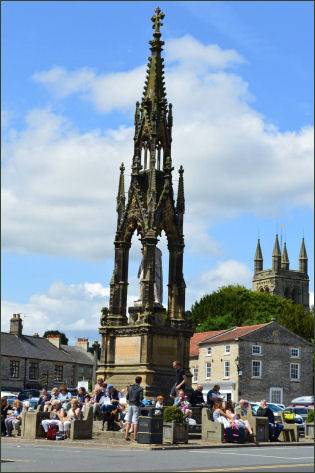
The Feversham family lived in Duncombe Park, an Italianate baroque mansion and one of Yorkshire's foremost historic houses and estates, lies Built in 1713 to the designs of William Walkefield, the house has been completely renovated since 1985. The largest collection of birds of prey in the north of England and a major new addition to Helmsley, the International Centre for Birds of Prey opened in 2013. Set in the heart of Duncombe Park just a short walk from Helmsley visitors can see eagles, vultures, hawks, falcons, owls and more.
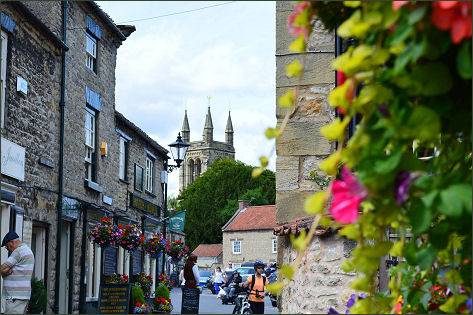
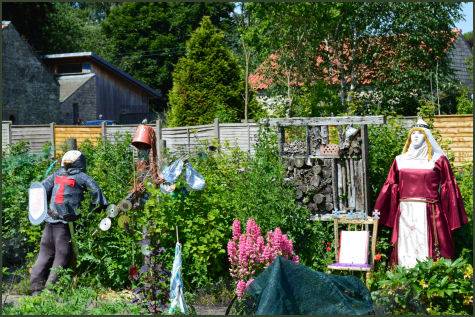
Nearby Duncombe Park National Nature Reserve is situated in the grounds of the Duncombe Park, a country house which was built in 1713 in River Rye valley, part of the grounds became a National Nature Reserve in 1994.
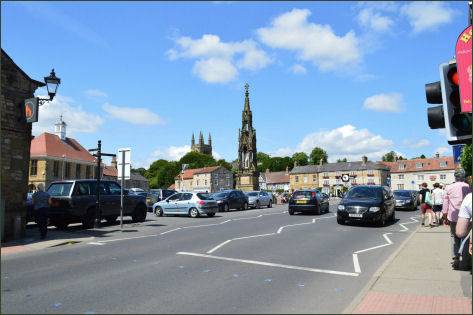
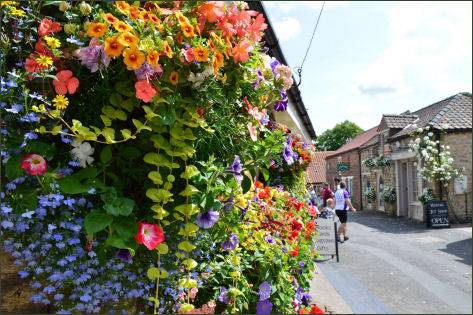
Nearby Nunnington Hall, situated four and a half miles to the south east of the town, is one of the best-maintained manor houses in the country. Dating from the seventeenth century, the house is situated in a walled garden with peacocks strutting round the grounds.
Both the Cleveland Way and the Ebor Way Long Distance Trails both begin at Helmsley.
Images courtesy of Paul Johnson
The Church of All Saints, Helmsley
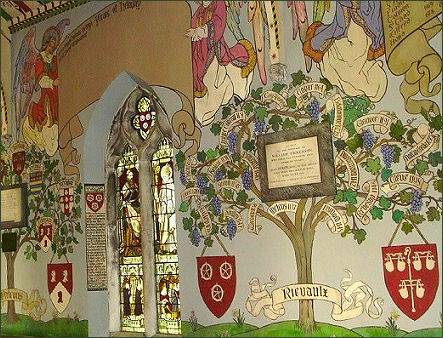 The Parish Church of All Saints at Helmsley is situated between the north-west corner of the market square, and Castlegate. A church has occupied the site since before the Norman conquest and the churchyard was used as a market place in Anglo-Saxon times.
The Parish Church of All Saints at Helmsley is situated between the north-west corner of the market square, and Castlegate. A church has occupied the site since before the Norman conquest and the churchyard was used as a market place in Anglo-Saxon times.
The present church dates to the twelfth century and was built in the Norman style. Two Norman arches, over the entrance doorway and the chancel, remain in situ. The building has a three-stage west tower, a four-bay nave, a two-bay chancel, transepts, vestry and south porch.
It was restored in the ninteenth century restoration in the Gothic Revival style but incorporates work from the old church. The north aisle murals were designed by the Rev. C Gray and completed in 1909 by Mr Gast, a London artist. The murals depict the history of Christianity in the area. The stained glass windows relate the story of the twelfth century lord of Helmsley, Walter Espec.
The north chapel is dedicated to Aelred, third abbot of the Cistercian monastery at nearby Rievaulx Abbey. The south chapel is dedicated to St. Columba, a missionary from Ireland who brought Christianity to much of northern England. The chapel contains superb wall paintings which include depictions of Saint Oswald and a knight slaying a dragon emblazoned with the pagan gods
More on All Saints Church, Helmsley
